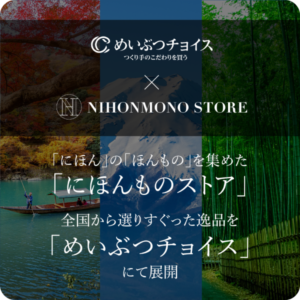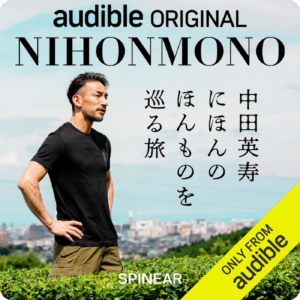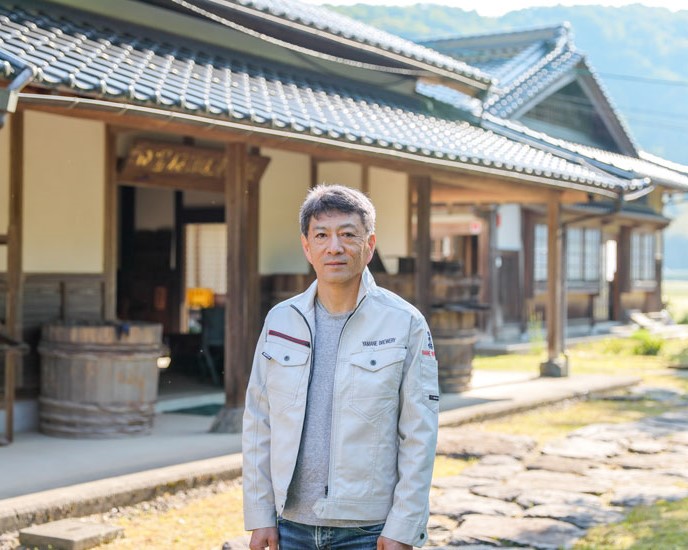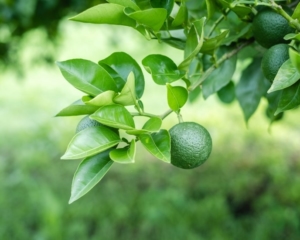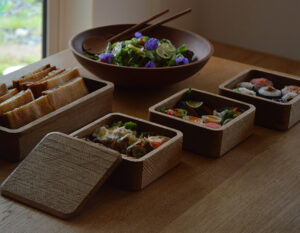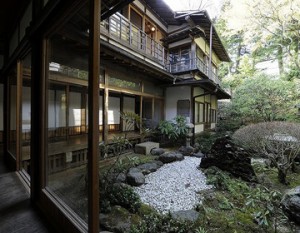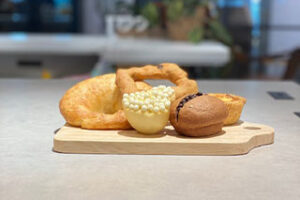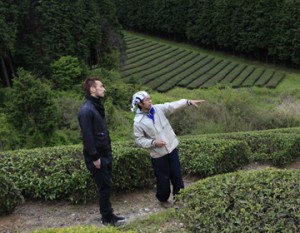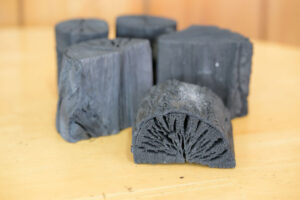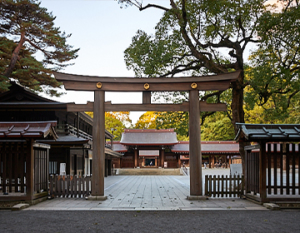Yamane Sake Brewery has been brewing sake in Aoyacho, Tottori City since the Meiji era. Hiokizakura,” a brand name that has existed since the brewery’s founding, is a sake that enhances its flavor as it ages and makes the most of meals. While some breweries focus on the flavor of freshly squeezed sake, Yamane Sake Brewery places importance on the policy of nurturing sake over time.
Sake Brewing at Hiokidani, Aoyacho, Tottori City

Aoya Cho is located on the western edge of Tottori City. Before the merger, it was the site of Hiokidani Village. Surrounded by mountains, Hiokidani thrived on rice cultivation and Japanese paper production. Yamane Sake Brewery was founded in 1889 in Hiokidani Village. The brewery has been producing its representative brand “Hiokizakura” since its establishment, and Mr. Masanori Yamane currently serves as the fifth-generation brewer.
Hiokizakura, a cherry tree born from the symbol of the village

The name “ Hiokizakura” comes from a single cherry tree that blooms in the village. Because it blooms early, it begins to bloom in February, and the villagers love it, saying, “Spring comes when this cherry tree blooms. Like this cherry tree, Yamane Sake Brewery’s Hiokizakura was created to “be a source of comfort for everyone.
The name “Hioki” also expresses the brewery’s belief that “sake should become better the longer it stays in the bottle. It is the only brand produced at the Yamane Sake Brewery.
Revival of Tottori’s indigenous rice, strong rice

The main sake rice used is Goriki, which is grown only in Tottori Prefecture, Yamada-Nishiki, which is a major rice variety in Japan, and Tamasakae, which is commonly used in Tottori Prefecture. Other varieties used include Omachi, which is said to be the ancestor of Yamada-Nishiki.
Of these, the strong variety is the one that represents Tottori Prefecture’s unique characteristics. Like Yamadanishiki and Omachi, it was originally created as a sake brewing rice suitable for ginjo production. It had a linear heart white, one of the elements that make the rice well soluble, making it suitable for sake brewing, but it had the disadvantage that the rice was tall and easily fell over. The yield was also not very high, and the lineage was discontinued in the 1950s.
Later, Mr. Yamane’s father and other brewers decided that they wanted to make sake with rice that could only be found in Tottori. They revived strong sake from the original variety that had been preserved at the university.
Now, in order to keep strong sake alive, he runs an organization in cooperation with breweries and university professors in the prefecture, and continues to work to protect the seeds.
To make sake that makes you hungry.

Many Tottori sake has a dry, robust flavor that goes well with the firm-fleshed seafood from the Sea of Japan. Yamane Sake Brewery also aims for complete fermentation, which allows the yeast to eat up all the sugar in the mash, so that the freshly squeezed sake has a bitter taste but becomes more flavorful as it matures. When asked why, Yamane told us, “Because I want to make sake that makes you hungry.
My grandfather told me, ‘Don’t make sake that interferes with food,’ and I worried about it for many years. Later, my father made me think about it, and I realized that he meant sake that would make the most of food, not sake that only goes with sake. To that end, we are aiming for a sake that has a bitter and astringent taste and that will whet your appetite.”
Many of Tottori’s unique sake rice varieties can be bitter and astringent when new sake is made, but their true value is revealed after maturation. Such sake does not interfere with the meal, but rather whets the appetite the more one drinks it. Mr. Yamane’s goal is to create sake that makes the most of Tottori’s unique characteristics.
Clashing with farmers
How can we make sake that whets the appetite and is pleasantly intoxicating? After many years of trial and error, we realized that sake made with rice that has been treated with as little pesticides and chemical fertilizers as possible has a depth of flavor that cannot be expressed by the five tastes, and when the intoxication sets in, the sake is pleasantly intoxicating with little burden on the body.
However, farmers know very well that it is better not to use pesticides. Because refraining from the use of pesticides would lead to more problems, such as reduced rice yields and insect infestation, not many farmers actually accepted the idea.
Also, until then, not many farmers had an image of how the rice they grew would be turned into sake, or what kind of rice would make good sake. When rice is used to make sake, the proteins and fats around the rice become a tangy taste, and it is said that the higher the rice polishing ratio, the more refined the sake will taste. Understanding this point, the amount of fertilizer and water management methods are also changed to produce sake rice with as low a protein content as possible.
Mr. Yamane drank sake with the cooperating farmers many times before they were able to communicate their thoughts to each other, and he never gave up on communicating how the rice they grew would be turned into sake. Gradually, one by one, more and more farmers came to understand what it means for their rice to be transformed into sake, and the number of farmers who sympathize with Mr. Yamane’s sake brewing while using as few agricultural chemicals as possible increased. Currently, the company purchases rice for sake from eight contract farmers.
Prepared by rice variety and by producer.

The flavor of the rice, which is filled with such passion, differs depending on the variety and the producer. For this reason, Yamane Sake Brewery brews rice by variety and by producer. The brewery brews small quantities of sake, which requires a lot of time and effort on the part of the brewers, but all sake is brewed in small batches (rather than in large barrels).
Good sake is made from good rice. We want people to know the background behind it,” he says, adding that all the rice producers are listed on the label as well. This has brought about many positive changes, such as the fact that the rice producers now have fans, who compare their sake with sake made from other varieties.
Commitment to the traditional sake yeast yeast yeast mash starter

Yamane Sake Brewery began making sake using the kimoto method in 2002.
Currently, there are two main methods of sake brewing. Many breweries use this method because it prevents the growth of bacteria. On the other hand, the “ikuhashi-zukuri” method does not add lactobacilli and allows the natural generation of lactic acid.
Mr. Yamane focuses most of his attention on the sake brewing process. In the process of making ikkasho, the sake mother is mixed with the sake and “yama oroshi” is performed, which allows the natural lactic acid to grow. In the process, the yeast that lives in the brewery is incorporated, creating a flavor unique to that brewery. The method of brewing without “yamahoshi” is called “yamahai brewing.
The brewery’s brewing instructor told me to start with yamahai, but yamahai was not in my mind from the beginning. I started with a single-minded desire to do nama-hake brewing. In contrast to the fast brewing in which artificial lactic acid bacteria are added, the number of microorganisms involved in the sake brewing process is different, so it is not reproducible. But that is what makes it interesting.
Enjoy the change in the expression of sake, bewitching sake.

When asked at what temperature sake should be drunk, Mr. Yamane replies, “Everyone, please play around. The aroma of sake expands as it is warmed up, and the flavor changes with slight temperature changes. Instead of following a standard that says sake should be drunk at this temperature, I want people to warm sake to their favorite temperature and enjoy the gradually changing expression of the sake. In this way, I want people to find their own favorite expression of sake.
In order for people to enjoy sake in this way, Mr. Yamane is now aiming for a “mysteriousness” of sake. He is currently researching the possibility of using grains to produce the same intoxicating and mysterious sensation as wine, for example.
Even after 20 years of research, I still haven’t been able to create that mysterious sensation,” he says. I’m trying to change things so that I don’t regret it.
With a dazzling smile on his face, Mr. Yamane’s goal is to create Hiokizakura, his pride and joy, which would satisfy even his predecessors.
